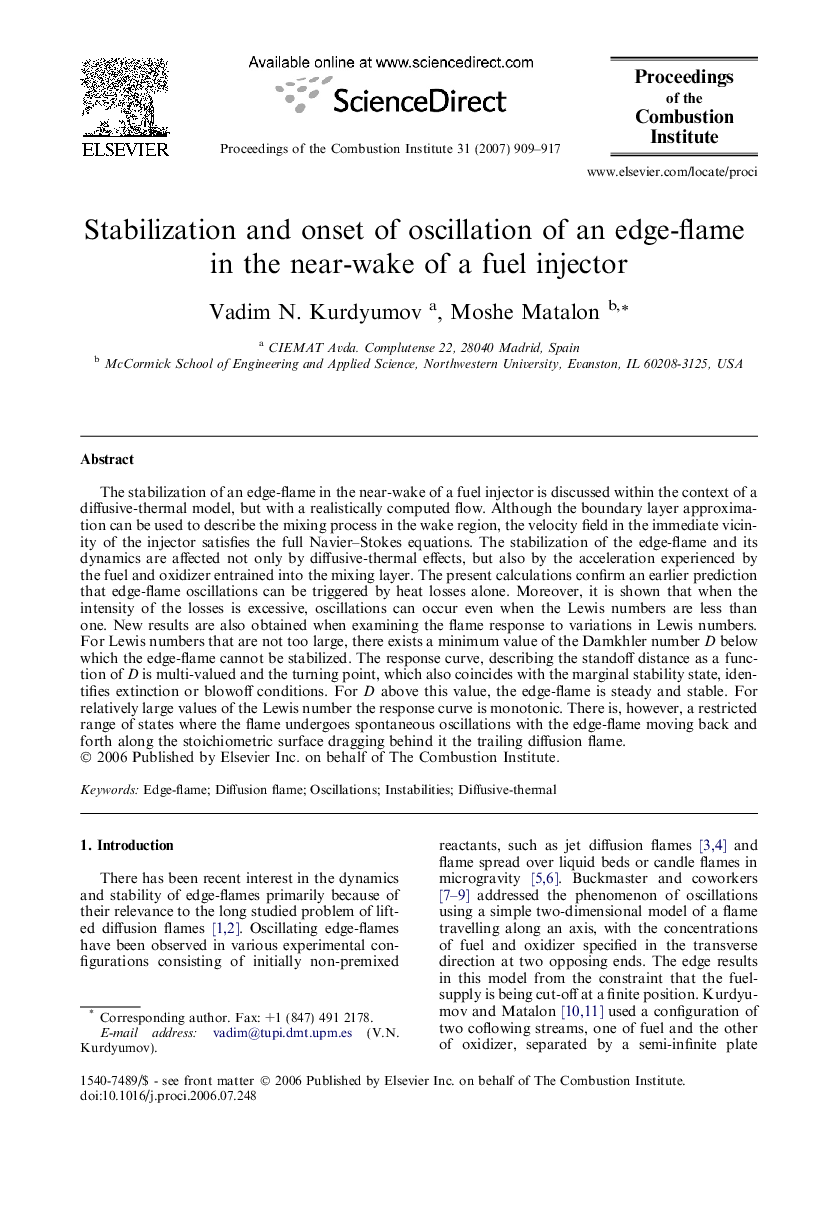| Article ID | Journal | Published Year | Pages | File Type |
|---|---|---|---|---|
| 240800 | Proceedings of the Combustion Institute | 2007 | 9 Pages |
The stabilization of an edge-flame in the near-wake of a fuel injector is discussed within the context of a diffusive-thermal model, but with a realistically computed flow. Although the boundary layer approximation can be used to describe the mixing process in the wake region, the velocity field in the immediate vicinity of the injector satisfies the full Navier–Stokes equations. The stabilization of the edge-flame and its dynamics are affected not only by diffusive-thermal effects, but also by the acceleration experienced by the fuel and oxidizer entrained into the mixing layer. The present calculations confirm an earlier prediction that edge-flame oscillations can be triggered by heat losses alone. Moreover, it is shown that when the intensity of the losses is excessive, oscillations can occur even when the Lewis numbers are less than one. New results are also obtained when examining the flame response to variations in Lewis numbers. For Lewis numbers that are not too large, there exists a minimum value of the Damkhler number D below which the edge-flame cannot be stabilized. The response curve, describing the standoff distance as a function of D is multi-valued and the turning point, which also coincides with the marginal stability state, identifies extinction or blowoff conditions. For D above this value, the edge-flame is steady and stable. For relatively large values of the Lewis number the response curve is monotonic. There is, however, a restricted range of states where the flame undergoes spontaneous oscillations with the edge-flame moving back and forth along the stoichiometric surface dragging behind it the trailing diffusion flame.
